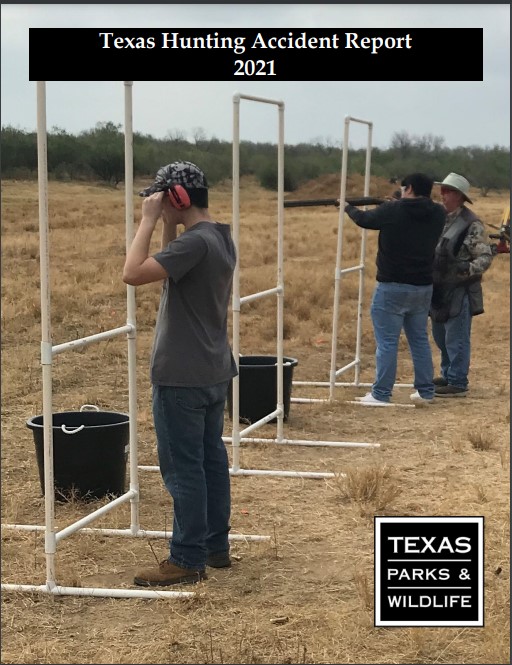New Report Shows Hunting Accidents in Texas are at a Record Low
AUSTIN – Hunting-related accidents in Texas are at an all-time low since Hunter Education became mandatory in 1988, according to the 2021 Texas Hunting Accident Report released by the Texas Parks and Wildlife Department (TPWD).
According to the report, of more than 49,000 certifications in 2021, Texas experienced only one fatality and 11 accidents statewide.
“In 2021, three-quarters of the incidents were what we call ‘swinging on the game outside of a safe zone of fire,’” said Steve Hall, the Hunter Education Coordinator for TPWD. “This is the most common mishap in Texas besides careless handling in and around vehicles. The cardinal rule of hunting and shooting safety is keeping the muzzle of a firearm always pointed in a safe direction.”
It marks a significant decrease since 1988 when more than 18,000 Texans received their Hunter Education certification but reported 12 fatalities and 70 accidents throughout the state. As more Texans have taken to the field and obtained their Hunter Education certification, these numbers have greatly improved. Even before Hunter Education became mandatory in 1988, TPWD has offered hunter education courses since 1972, certifying nearly 1.5 million students. Today, Texas requires Hunter Education for every hunter, including out-of-state hunters born on or after Sept. 2, 1971. The minimum age for certification is nine years, and a certificate is good for life.
There are two-course options for anyone who needs to take Hunter Education. The introductory classroom course includes six hours of instruction plus skill exercises, a review, and a final exam and is often in schools or indoor venues. Online is combined with a field course, has two parts: a free online system that you should complete first, and then the field portion that typically takes a minimum of four hours to complete. The field course contains:
- A presentation on ethical and responsible hunting.
- Participation in a hunting skills trail.
- A live-fire exercise.
- A review of regulations and a final exam.
Restrictions for the online-only course are for anyone 17 years of age or older. Online coursework varies from two to four hours depending on pre-knowledge, age, reading level, and other factors.
Hall offers other tips that will help ensure a safe experience for hunters whether they’re at their home, in transit to their hunting spot, or spending time in the field.
- Unload all firearms when not in use, especially in the home, transport, and field, until ready to shoot.
- Keep your fingers outside the trigger guard until you are ready to take a shot.
- Waterfowl hunters should wear protective clothing, waders, and approved life jackets in boats or around water, especially in the winter months. Drowning ranks as the number one hunting incident for these hunters.
- The number one incident for dove, quail, and pheasant hunters is swinging on the game outside a safe zone of fire. Communicate and stick to your safe fire area and never shoot towards another hunter, buildings or structures, or domestic animals such as cows.
- Be sure of your target- what is in front of and behind the target.
- Wear blaze orange to be seen by other hunters.
Hunters must have proof of Hunter Education certification on their person while in the field. Hunters have access to their Texas proof of Hunter Education in the free Outdoor Annual mobile app for iOS and Android.
Learn more about Hunter Education, how to sign up for a course, and find resources for students on the TPWD website.








 EastTexasRadio.com Powered by Ten Stations
EastTexasRadio.com Powered by Ten Stations





